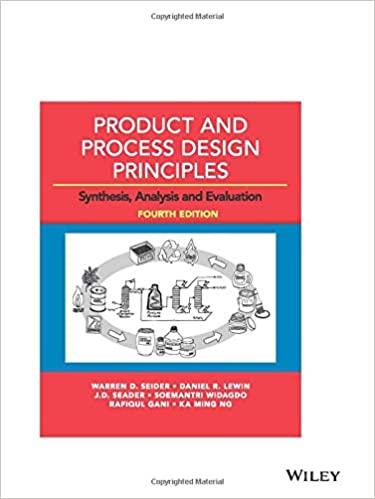A tennis ball is a rubber hollow sphere covered by a thin layer of fabric usually yellow
Question:
A tennis ball is a rubber hollow sphere covered by a thin layer of fabric usually yellow in color. It has a diameter of \(6.54-6.86 \mathrm{~cm}\) and weighs \(56.0-59.4 \mathrm{~g}\). The internal pressure of the ball filled with air is around \(12 \mathrm{psig}\). The thickness of the rubber shell is around \(3 \mathrm{~mm}\) and its composition is as follows*:

Per hundred rubber (phr) is a unit used in the rubber area to indicate the relative weight of each component with respect to the weight of rubber set at 100 . The purpose of clay is to reduce the air permeability of the rubber to maintain the ball pressure. Normally, tennis balls are sold as a set of three inside a pressurized plastic tube to prevent the loss of ball pressure.
(a) A manufacturer of tennis balls would like to know the impact of the gas pressure of the plastic tube on the shelf life of the balls. Plot the change of ball pressure with time at different tube pressures ranging from 0 to \(12 \mathrm{psi}\) above ambient pressure at room temperature. Use \(6 \times 10^{-8} \mathrm{~cm}^{2} /(\mathrm{s} \mathrm{atm})\), the nitrogen permeability in natural rubber with \(32 \mathrm{phr}\) of clay, for your calculations. Select the appropriate tube pressure for ball storage, if the reduction in ball pressure is less than 5\% in 2 years.
(b) The plastic tube is made of PET. What should be the dimensions of the tube for storing three tennis balls? Estimate the minimum wall thickness of the tube to achieve a two-year shelf life, that is, having a reduction in tube pressure of less than \(5 \%\). Use the nitrogen permeability in PET, \(0.28\left(\mathrm{~cm}^{3} \mathrm{~mm}\right) /\left(\mathrm{m}^{2}\right.\) day \(\left.\mathrm{atm}\right)\), in your calculations.
(c) Recently, a rubber coating embedded with aligned clay platelets has been developed. This nanocomposite impedes the passage of air by creating a tortuous path. The manufacturer wishes to use this material to prolong the shelf life of the tennis ball without significantly changing its size. A thin layer of butyl rubber with nitrogen permeability of \(7 \times 10^{-8} \mathrm{~cm}^{2} /(\mathrm{s} \mathrm{atm})\) embedded with nanosilicate with an aspect ratio \((\alpha)\) of 100 and a volume fraction \((\phi)\) of 0.1 is applied on the rubber core. A theory for the gas ermeability of the nanocomposite ( \(P_{\text {composite }}\) ) is given by (Takahashi et al., 2006),
\[\frac{P_{\text {composite }}}{P_{\text {matrix }}}=(1-\phi) f\]
Lape et al. (2004) provides a model for the tortuosity factor, which is given by
\[f=\left(1+\frac{(\alpha \phi)^{2}}{4}\right)^{-1}\]
What should be the thickness of coating to double the life span of the tennis ball, which is defined as \(90 \%\) of ball pressure retention, under ambient conditions? In this case, \(P_{\text {matrix }}\) refers to the permeability of nitrogen in butyl rubber.
Step by Step Answer:

Product And Process Design Principles Synthesis Analysis And Evaluation
ISBN: 9781119355243
4th Edition
Authors: Warren D. Seider, Daniel R. Lewin, J. D. Seader, Soemantri Widagdo, Rafiqul Gani, Ka Ming Ng




